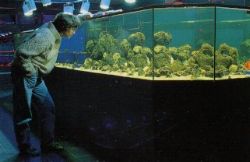 Q) What points should I bear in mind when looking for healthy livestock?
Q) What points should I bear in mind when looking for healthy livestock?
R. Messina, Florence, Italy.
A) Apart from a bargain, everyone is looking for livestock in the peak of health. By purchasing strong and vibrant animals, the marinist gains a distinct advantage in that his/her charges will already be ready to survive the rigours of aquarium acclimatisation and come out the other end full of vitality and stress-free. But do most enthusiasts know what to look for in a good specimen? How can we tell the good from the bad - even though they may be ugly!?
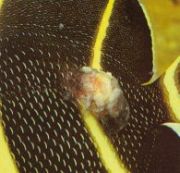
Before any livestock is bought give careful thought to the intended place of purchase. Always buy from an aquatic specialist. Those whose main business is budgerigars and hamsters but who just happen to have one or two dark marine tanks tucked away in a corner will rarely give good value for money and the stock might be suffering as a result.
Look for a proper aquatic retailer with bright, well-maintained premises. The shelves should be stocked with a good selection of products, including books. In general, the whole place should ooze an 'open for business' air. Staff should be courteous and helpful without appearing forceful or arrogant. They must be willing to answer questions enthusiastically and knowledgeably and must never make you feel guilty because you have declined to make a purchase - after all, you may want to sleep on it and come back in a few days.
Once you have satisfied yourself, look at the tanks. Are they bright, clear and well looked after? Are all the animals clearly labelled with prices and possibly other helpful information? If the answer is yes to all these questions, then let the search begin!
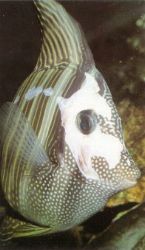 Healthy Fish
Healthy Fish
Fish display tanks are often very impressive with a myriad of colourful species mingling to and fro. The very sight is one to invite purchase of at least several dozen . . ! But before we get carried away, we should actually have a goal in mind; if not one particular species, then at least one of a choice planned before leaving home. Buying a fish on impulse is the fishkeeper's greatest enemy. It often leads to more trouble than can be imagined owing to incompatibility or an overly sensitive nature that cannot be accommodated.
However, let us look at the tanks closely. Are there any dead fish on the bottom? Does the rest of the stock look lifeless and miserable? If so, then this is a bad sign. Dead stock (and it does happen, even in the best kept tanks) must be removed by the staff as soon as it is seen by them, and not by the customers, and fish should be alert and active (unless the species dictates a fairly static disposition - like Cardinalfish).
Fins must be intact and not 'in shreds', although an odd split is no real consequence and will soon mend.
The body should exhibit good, bright coloration with no scars or blemishes that may indicate a fighting injury or even body rot or lateral line disease. 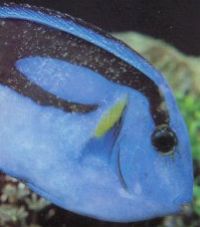
Eyes must be clear (do not forget to look at both!); any milkiness could suggest blindness or an impending loss of sight.
Bulging eyes are easy to spot and those species with so-called 'pop-eye' are to be given a wide berth.
Having already taken into account the natural swimming patterns of the species make sure it conforms to that habit and shows no signs of rising to the surface against its own free will; actions of this nature suggest a disease of the swimbladder which is difficult to cure.
Fish should be alert and swimming with a purpose. Any disorientation shown by colliding with the sides of the tank etc., could be a sign of disease but it also could be the actions of newly imported fish. If this is the case, then re-visit the shop after a few days and specimen should be fully recovered, perky and swimming about happily.
A grey slimy coating to the body and fins is a certain sign that things are not right and are best left alone.
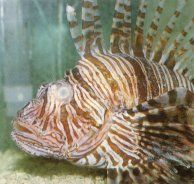 Whitespot and Oodinium not only rules out any fish suffering from it but it also excludes any of its tankmates as it is a highly contagious illness prone to affect any that share the same water.
Whitespot and Oodinium not only rules out any fish suffering from it but it also excludes any of its tankmates as it is a highly contagious illness prone to affect any that share the same water.The best advice anyone can give when purchasing fish is to read up on the species first! Know how it should appear, swim, eat, behave. Arm yourself with knowledge!
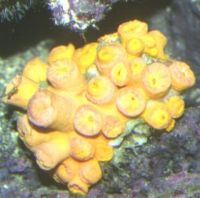
The sheer range of invertebrates, when compared to fish, is simply overwhelming. Couple this with a multitude of different lifestyles and it can sometimes be very difficult to tell a healthy animal from a genuinely sick one! Luckily, the same or similar range of inverts appear time and time again, leading to a useful familiarity.
As with fish, the best advice that can be given is to locate some published photographs of the desired animal so you know what a healthy specimen should look like in advance!
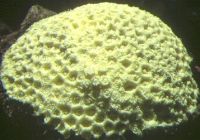 Corals
CoralsSoft and leather corals are often witnessed in the 'shut down' mode with no polyps showing and a shrunken body. This is quite a normal part of their life cycle and they should soon recover to exhibit a firm, plump body covered in polyps. Any specimens with holes through the flesh or displaying any signs of powdery disintegration must be avoided.
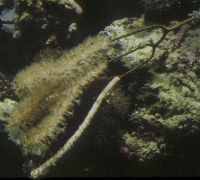
A healthy tubeworm will have a full feathery 'head' and retract quickly when touched. The tube must be intact and firm to support the worm properly.
This is a large group that includes the ever popular Starfish and Sea Urchins. When considering Starfish make sure that all the arms are there with no signs of deterioration either at the tips or along the body. Sea Urchins are normally active at night but a healthy specimen will be moving its spines during the day and have a firm foothold on a good anchorage point. Urchins with some or all of its spines missing or 'dropped' are not worth considering.
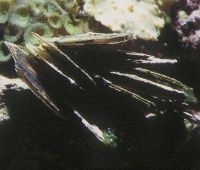 Q) If I get home and find that closer inspection reveals a sick fish or invert, what should I do?
Q) If I get home and find that closer inspection reveals a sick fish or invert, what should I do?
A) Do Not immediately pack it up and rush back to the shop from where it was purchased. Give the shop a call, tell them the problem and ask their advice. Most helpful shops will exchange stock that is genuinely 'faulty' (for want of a better word) within 24 hours of purchase. Remember though to be courteous as you may want to visit that shop again!
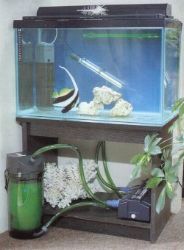
A) Yes, most definitely. A quarantine tank should be owned by all serious marine fishkeepers.
Q) Prices vary wildly in my three nearest retailers for the same animal, should I choose the cheapest?
A) No, choose the healthiest and finest specimen. If this turns out to be the cheapest, all well and good.
Q) Is it worth buying livestock by mail order?
A) Sometimes, but at the buyers risk! If you cannot see what you are buying, the risks can be enormous! If you are going to buy mail order, make sure that there are guarantees regarding the safe arrival of livestock and a money refund policy. Try and choose a company that has been recommended by friends or a magazine.

